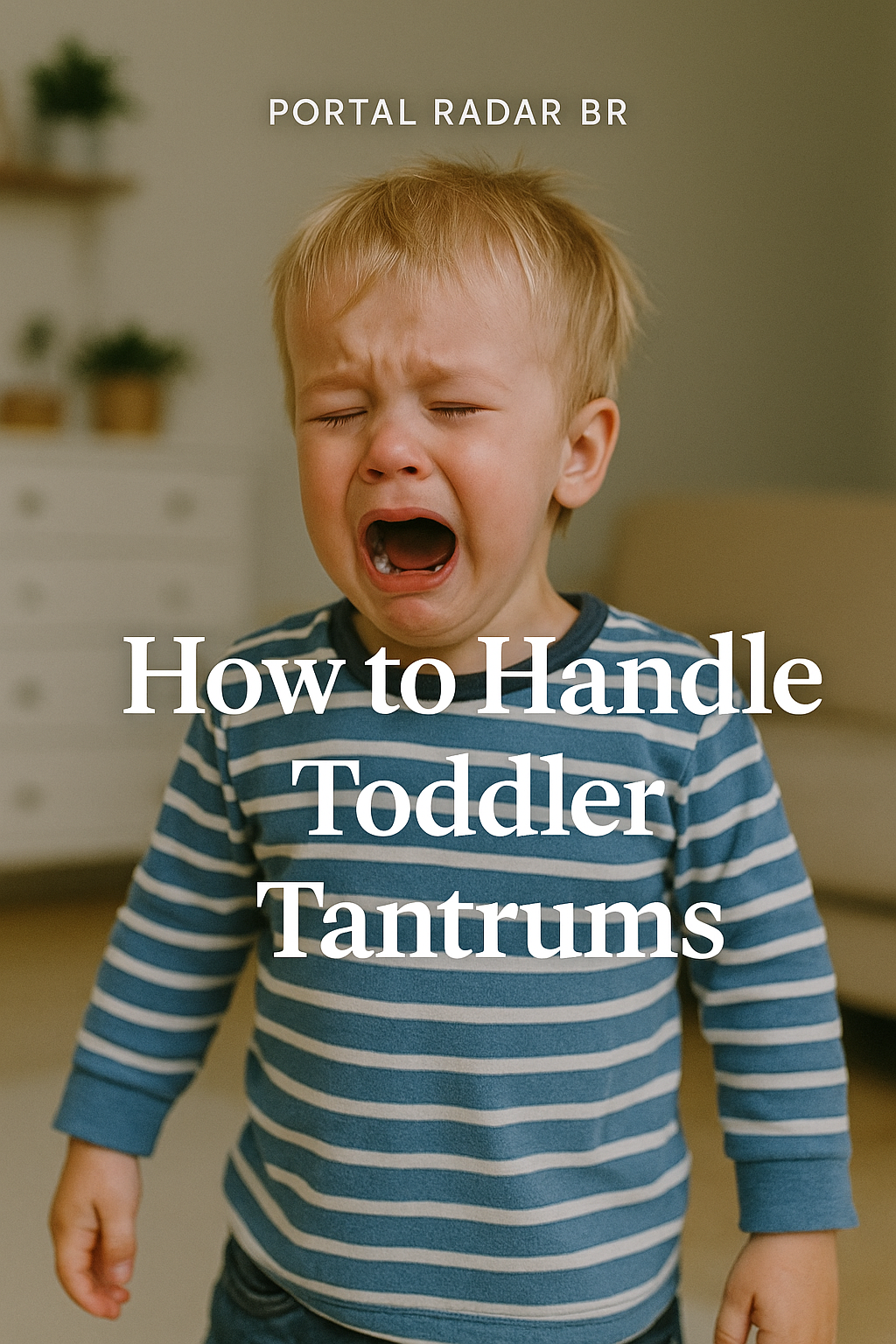Few parenting challenges test patience quite like toddler tantrums. One minute your child is laughing, the next they’re on the floor screaming. These emotional outbursts are a natural part of childhood development, but they can also feel overwhelming—especially in public places or after a long day.
The good news is that tantrums are not a reflection of bad parenting. They’re simply your toddler’s way of expressing frustration, confusion, or a desire for independence. Understanding why tantrums happen and how to respond with calm, consistent strategies can transform those explosive moments into opportunities for connection and learning.
Why Toddlers Have Tantrums
Tantrums are common between the ages of 1 and 4. During this time, children are learning how to express themselves but don’t yet have the emotional or verbal tools to do so effectively.
Common triggers include:
- Frustration from not being understood
- Hunger, tiredness, or overstimulation
- Desire for independence (“I do it myself!”)
- Difficulty handling transitions
- Attention-seeking behavior
- Emotional overwhelm
Your toddler isn’t being “bad”—they’re simply overwhelmed and need help regulating their emotions.
Stay Calm and Grounded
When your child is losing control, the most powerful thing you can do is stay calm. Reacting with yelling, threats, or anger only escalates the situation.
Tips for staying grounded:
- Take a deep breath before responding
- Speak slowly and in a neutral tone
- Avoid power struggles
- Remember: this is not personal—it’s developmental
Your calm presence acts like an anchor during your toddler’s emotional storm.
Avoid Punishment During the Tantrum
Discipline should be saved for after the tantrum has passed. During the episode, your child is not in a logical state of mind. Trying to lecture, scold, or punish won’t be effective and may increase distress.
Instead:
- Stay nearby if your child is safe
- Let them cry or express themselves
- Use few words, like: “I’m here. I’ll help you when you’re ready.”
If your child is being aggressive (hitting or throwing things), calmly remove them from the situation without yelling.
Offer Comfort or Space—Depending on the Child
Some toddlers crave hugs or soothing during a meltdown. Others may need space to cool down.
Watch for clues:
- Does your child reach for you?
- Or do they pull away and scream louder when touched?
There’s no “one right way.” Some children want to be held. Others want room. Respect their emotional needs while keeping them safe.
Use Simple Words to Acknowledge Feelings
Labeling your child’s emotions helps them feel seen and starts building emotional literacy.
Say things like:
- “You’re really mad right now.”
- “It’s hard when we can’t do what we want.”
- “You’re sad because we had to leave.”
Acknowledging emotions is not the same as giving in. It helps your child feel understood, which can reduce the intensity of the tantrum.
Don’t Give In to Unreasonable Demands
While you should be compassionate, avoid giving in to the demand that triggered the tantrum (especially if it breaks a boundary).
If the tantrum is over not getting a cookie before dinner, don’t hand over the cookie to make the crying stop. This teaches that tantrums “work.”
Instead, say:
- “I know you want a cookie. Dinner is almost ready.”
- “You can have one after dinner. Let’s pick your favorite.”
Hold your boundary with empathy, not anger.
Use Distraction for Younger Toddlers
For toddlers under 2.5 years, their attention span is short—use that to your advantage.
- Redirect with a favorite toy or song
- Change the environment (go outside or into a different room)
- Offer choices: “Do you want the red cup or the blue one?”
Distraction is not manipulation—it’s a helpful tool for very young children who haven’t developed emotional control.
Talk About the Tantrum Afterward
Once your child has calmed down, circle back with a short, loving conversation.
Try:
- “That was a big feeling. You were upset when we had to leave.”
- “Next time, let’s use our words instead of screaming.”
These chats teach emotional awareness and build trust. Don’t turn it into a long lecture—just connect briefly and move on.
Prevent Future Tantrums with Planning
While tantrums can’t be completely avoided, you can reduce their frequency with proactive strategies:
- Stick to routines for meals, naps, and bedtime
- Keep snacks on hand to avoid hunger meltdowns
- Warn about transitions (“In 5 minutes, it’s time to leave the park.”)
- Offer choices to give a sense of control
- Limit screen time, which can overstimulate and dysregulate emotions
Consistency and structure help toddlers feel secure, reducing their need to act out.
Don’t Worry About What Others Think
Public tantrums can be the most stressful. Strangers may glare, offer unwanted advice, or even make rude comments. Ignore them.
You are not a bad parent. You are not doing anything wrong.
Focus on your child—not on judgmental eyes. Your empathy and patience matter far more than public approval.
Final Thoughts: Every Tantrum Is a Teaching Moment
Toddler tantrums are challenging, but they’re also a chance to teach your child how to feel and deal with strong emotions. It takes time and repetition, but with consistent love, calm responses, and clear boundaries, your child will learn how to regulate themselves.
You’re not just handling a tantrum—you’re shaping emotional resilience that will last a lifetime.
So take a breath, meet your child where they are, and know that you’re doing an incredible job—even on the loudest, most tear-filled days.
